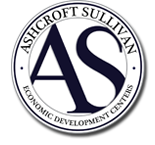A special designation issued by the USCIS called an “EB-5 Regional Center” (“RC”) provides several major benefits to immigrants seeking residency through the traditional EB-5 program.
One of the most important advantages of working with a designated RC is relaxed job creation requirements — this is critical to obtaining and sustaining permanent residency. Normally, an immigrant must prove he created and sustained 10 new, direct employees over a 24-month period. Under the RC program, however, the immigrant can satisfy residency testing by showing indirect job creation. In other words, the immigrant does not need to show he directly employs any workers.
Another RC advantage is that immigrants may pool capital thereby reducing management responsibilities while increasing job creation results.
On October 5, 2012, President Obama signed into law a three-year extension of the EB-5 Regional Center program. This means that immigrants can safely obtain Green Card status through the Ashcroft/Sullivan/Baybridge Mid-Atlantic Economic Development Center program through September 30, 2015. While the EB-5 visa process has three major milestones, there are, of course, many smaller steps, which must be completed to reach the goal of residency. The below chart provides a more detailed overview of this process:
| Steps | Immigration Process Chart |
| 1 | Immigrant carefully researches Ashcroft/Sullivan/Baybridge Mid-Atlantic Economic Development Center program options to assess qualifications, timing and benefits. |
| 2 | If interested in participating and is otherwise qualified, Immigrant submits a preliminary application to Ashcroft/Sullivan/Baybridge Mid-Atlantic Economic Development Center program managers. |
| 3 | Within 10 days, Ashcroft/Sullivan/Baybridge Mid-Atlantic Economic Development Center managers complete a background check and eligibility test. If accepted into the EB-5 visa program, the Immigrant is required to complete additional forms, collect records and place capital into escrow. |
| 4 | Immigrant is assigned a highly skilled EB-5 program visa lawyer that will prepare and file the comprehensive application package (Form I-526 “Immigrant Petition by Alien Entrepreneur”) to the USCIS. |
| 5 | If Form I-526 Petition is approved by USCIS, the application is transferred to US Embassy in Immigrant’s home country. The Immigrant will then attend a visa interview at the Embassy conducted by a U.S. Consular Officer. If Form I-526 petition is denied by USCIS, all application support materials are returned to the investor and the capital contribution is returned in full as soon as practicably possible and the USCIS case is closed. |
| 6 | If the Consular Officer approves the case, the EB-5 visa stamp is placed into the Immigrant’s passport (same for spouse and children). The immigrant and family must then enter the United States within 180 days of visa issuance, and upon first landing into America all receive conditional residency (conditional Green Card status) valid for 2 years. |
| 7 | As soon as the Immigrant and family make their first landing to America resulting in resident status, they are all free to live anywhere in the country, enjoy unrestricted travel/work rights. |
| 8 | Within several weeks of landing, the USCIS will manufacture and mail out the actual “Green Card” but until this arrives in your mailbox, the immigrant visa stamp in the passport serves as temporary evidence of residency. |
| 9 | About 21-24 months after I-526 approval, the EB-5 program provides the Immigrant with evidence proving of job creation. The Immigrant’s visa lawyer then prepares and files the required Form I-829 “Petition to Remove Conditional Status” with the USCIS. This required application seeks to change the immigrant’s status from conditional to permanent Green Card status. |
| 10 | If the Form I-829 application demonstrates the required job creation then the USCIS will approved the case. The Immigrant and family members then receive new “permanent” Green Cards without an expiration date. If the EB-5 program is unable to demonstrate required job creation, then the USCIS will deny the Form I-829 application and start proceedings to terminate the Immigrant’s residency. |
| 11 | After 3 years, the Immigrant and family members may to apply for U.S. citizenship and U.S. passport. |
